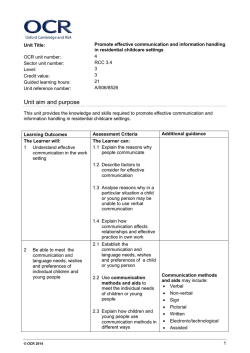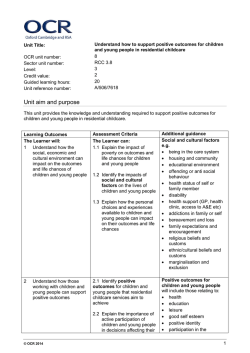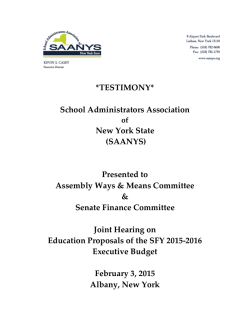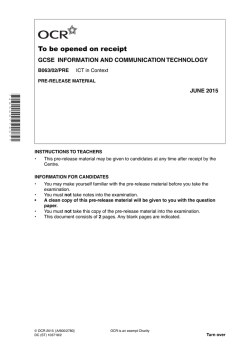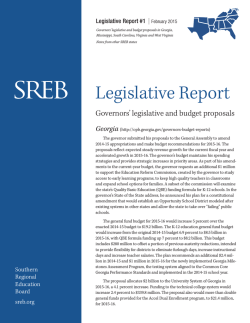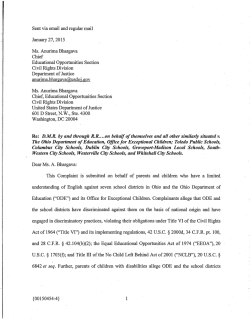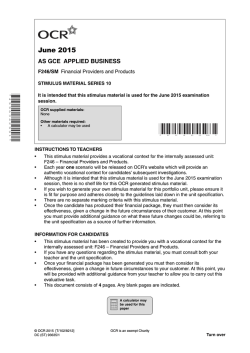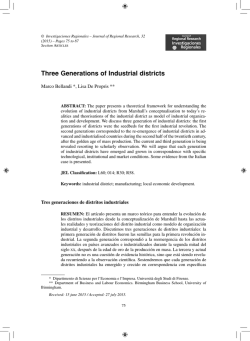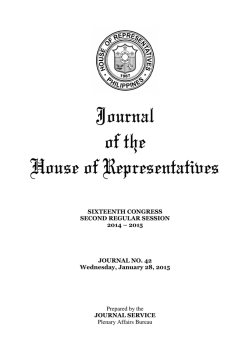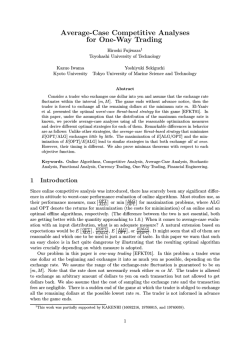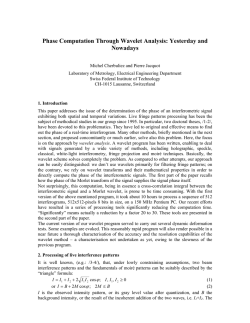
English EL DCL Fact Sheet
U.S. Department of Justice U.S. Department of Education Civil Rights Division Office for Civil Rights Ensuring English Learner Students Can Participate Meaningfully and Equally in Educational Programs English learner (EL) students constitute nine percent of all public school students and are enrolled in nearly three out of every four public schools. Under Title VI of the Civil Rights Act of 1964 (Title VI) and the Equal Educational Opportunities Act of 1974 (EEOA), public schools must ensure that EL students can participate meaningfully and equally in educational programs. The U.S. Department of Education (ED) and the U.S. Department of Justice (DOJ) have issued joint guidance to remind state education agencies (SEAs), public school districts, and public schools of their legal obligation to ensure that EL students can participate meaningfully and equally in educational programs. This fact sheet provides an overview of the joint guidance, but does not attempt to comprehensively address all of the issues in the guidance. While this fact sheet focuses on the responsibilities of school districts, the guidance makes clear that SEAs also have legal obligations toward EL students and limited English proficient (LEP) parents. The guidance is available at: http://www2.ed.gov/about/offices/list/ocr/ellresources.html. Identifying and Assessing All Potential EL Students x School districts must have procedures in place to accurately and timely identify potential EL students. Most school districts use a home language survey at the time of enrollment to gather information about a student’s language background and identify students whose primary or home language is other than English. x School districts must then determine if potential EL students are in fact EL through a valid and reliable test that assesses English language proficiency in speaking, listening, reading and writing. Providing Language Assistance to EL Students x EL students are entitled to appropriate language assistance services to become proficient in English and to participate equally in the standard instructional program within a reasonable period of time. x School districts can choose among programs designed for instructing EL students provided the program is educationally sound in theory and effective in practice. U.S. Department of Justice U.S. Department of Education Civil Rights Division Office for Civil Rights Staffing and Supporting an EL Program x EL students are entitled to EL programs with sufficient resources to ensure the programs are effectively implemented, including highly qualified teachers, support staff, and appropriate instructional materials. x School districts must have qualified EL teachers, staff, and administrators to effectively implement their EL program, and must provide supplemental training when necessary. Providing Meaningful Access to All Curricular and Extracurricular Programs x EL students must have access to their grade-level curricula so that they can meet promotion and graduation requirements. x EL students are entitled to an equal opportunity to participate in all programs, including pre-kindergarten, magnet, gifted and talented, career and technical education, arts, and athletics programs; Advanced Placement (AP) and International Baccalaureate (IB) courses; clubs; and honor societies. Avoiding Unnecessary Segregation of EL Students x School districts generally may not segregate students on the basis of national origin or EL status. Although certain EL programs may be designed to require that EL students receive separate instruction for a limited portion of the day or period of time, school districts and states are expected to carry out their chosen program in the least segregative manner consistent with achieving the program’s stated educational goals. Evaluating EL Students for Special Education and Providing Dual Services x EL students with disabilities must be provided both the language assistance and disability-related services to which they are entitled under Federal law. x EL students who may have a disability, like all other students who may have a disability and may require services under the Individuals with Disabilities Education Act (IDEA) or Section 504 of the Rehabilitation Act of 1973, must be located, identified and evaluated for special education and disability-related services in a timely manner. x To avoid inappropriately identifying EL students as students with disabilities because of their limited English proficiency, EL students must be evaluated in an appropriate language based on the student’s needs and language skills. Page 2 of 4 U.S. Department of Justice Civil Rights Division U.S. Department of Education Office for Civil Rights x To ensure that an individualized plan for providing special education or disabilityrelated services addresses the language-related needs of an EL student with a disability, it is important that the team designing the plan include participants knowledgeable about that student’s language needs. Meeting the Needs of Students Who Opt Out of EL Programs or Particular Services x All EL students are entitled to services. Parents may, however, choose to opt their children out of a school district’s EL program or out of particular EL services within an EL program. x School districts may not recommend that parents opt out for any reason. Parents are entitled to guidance in a language that they can understand about their child’s rights, the range of EL services that their child could receive, and the benefits of such services. School districts should appropriately document that the parent made a voluntary, informed decision to opt their child out. x A school district must still take steps to provide opted-out EL students with access to its educational programs, monitor their progress, and offer EL services again if a student is struggling. Monitoring and Exiting EL Students from EL Programs and Services x School districts must monitor the progress of all EL students to ensure they achieve English language proficiency and acquire content knowledge within a reasonable period of time. Districts must annually administer a valid and reliable English language proficiency (ELP) assessment, in reading, writing, listening and speaking, that is aligned to State ELP standards. x An EL student must not be exited from EL programs, services, or status until he or she demonstrates English proficiency on an ELP assessment in speaking, listening, reading, and writing. x School districts must monitor the academic progress of former EL students for at least two years to ensure that students have not been prematurely exited; any academic deficits they incurred resulting from the EL program have been remedied; and they are meaningfully participating in the district’s educational programs comparable to their peers who were never EL students (never-EL peers). Page 3 of 4 U.S. Department of Justice U.S. Department of Education Civil Rights Division Office for Civil Rights Evaluating the Effectiveness of a District’s EL Program x EL programs must be reasonably calculated to enable EL students to attain English proficiency and meaningful participation in the standard educational program comparable to their never-EL peers. x School districts must monitor and compare, over time, the academic performance of EL students in the program and those who exited the program, relative to that of their never-EL peers. x School districts must evaluate EL programs over time using accurate data to assess the educational performance of current and former EL students in a comprehensive and reliable way, and must timely modify their programs when needed. Ensuring Meaningful Communication with Limited English Proficient Parents x LEP parents are entitled to meaningful communication in a language they can understand, such as through translated materials or a language interpreter, and to adequate notice of information about any program, service, or activity that is called to the attention of non-LEP parents. x For more information about the civil rights of LEP parents and guardians and districts’ specific obligations to parents of EL students, visit http://www2.ed.gov/about/offices/list/ocr/docs/dcl-factsheet-lep-parents201501.pdf. ***** If you have questions, want additional information, or believe that a school is violating federal law: x You may visit the website of ED’s Office for Civil Rights (OCR) at www.ed.gov/ocr or contact OCR at (800) 421-3481 (TDD: 800-877-8339) or at [email protected]. For more information about filing a complaint, visit www.ed.gov/ocr/complaintintro.html. x You may visit DOJ’s Civil Rights Division, Educational Opportunities Section, website at www.justice.gov/crt/about/edu/ or contact DOJ (877) 292-3804 or [email protected]. For more information about filing a complaint, visit www.justice.gov/crt/complaint/#three. x For more information about school districts’ obligations to English learner students and limited English proficient parents, additional OCR guidance is available at http://www2.ed.gov/about/offices/list/ocr/ellresources.html. Page 4 of 4
© Copyright 2025
